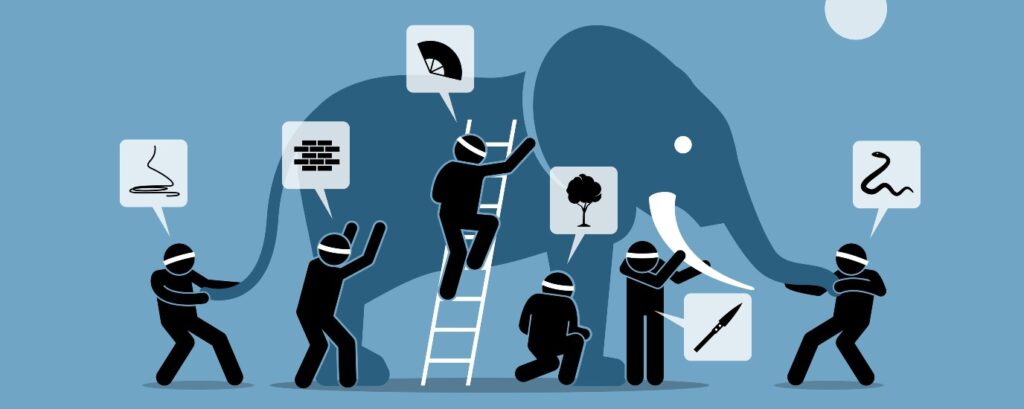Is HR Lagging Behind in Data Science Applications?
4 minute read
The HR Dilemma: Stuck in Traditional Methods
Human Resources (HR) departments are the backbone of any organisation, responsible for talent management, hiring decisions, promotions, and employee development. However, in today’s data-driven world, HR seems to be lagging behind in the application of data science and machine learning. Why is this the case?
The Knowledge Gap: HR Professionals vs. Data Scientists
One of the key reasons for HR’s lag in data science applications is the knowledge gap. HR professionals are often well-versed in people management and organisational psychology but lack the technical expertise required for advanced data analysis. Data science involves complex algorithms, statistical models, and programming languages that may be unfamiliar territory for many HR professionals.
Senior Executives’ Understanding: The Missing Link
Another challenge is the lack of understanding among senior executives about the true potential of machine learning and data science. While HR leaders may see the value in data-driven decision-making, many senior executives are still grappling with the concepts of machine learning and its applications. This disconnect often results in a reluctance to invest in data science initiatives within HR departments.
The Report and Dashboard Trap
In many organisations, HR departments are drowning in reports and dashboards. While these tools provide valuable insights into employee metrics, they often fall short of true data science. HR professionals spend hours compiling and analysing data, but the focus remains on generating reports rather than extracting actionable insights.
Subjectivity vs. Objectivity: The Talent Mapping Conundrum
One of the most critical areas where HR struggles with data science applications is talent mapping. Traditionally, talent mapping relies heavily on subjective assessments and gut feelings. HR professionals make hiring, promotion, and development decisions based on their intuition and experience rather than objective data-driven analysis.
Generation of Data: Elevating HR’s Data Quality
An additional challenge is the basic nature of the data that HR produces. HR departments often deal with rudimentary data sets, such as employee demographics and performance ratings. To truly leverage data science, HR needs to generate more sophisticated and comprehensive data sets.

Areas for Automation and Data Science Integration
Trusted Data suggests several areas where HR can automate processes and integrate data science to enhance its effectiveness:
1. Succession Planning Automation
Succession planning involves identifying and developing internal talent to fill key leadership positions. Data science can help automate this process by analysing performance data, skill sets, and career trajectories to identify potential successors. Machine learning algorithms can predict which employees are best suited for future leadership roles, facilitating proactive succession planning.
2. Learning and Development Effectiveness
Data science can revolutionise learning and development initiatives by personalizing training programs based on individual employee needs. Natural Language Processing (NLP) techniques can analyse employee feedback, performance reviews, and learning outcomes to tailor training modules. Predictive analytics can forecast skills gaps and recommend targeted learning paths to improve employee development effectiveness.
3. Compensation Analytics
Compensation analytics powered by data science can ensure fair and competitive pay structures within organizations. Machine learning algorithms can analyse market trends, employee performance, and industry benchmarks to recommend optimal compensation packages. This data-driven approach helps HR departments make informed decisions on salary adjustments, bonuses, and incentives.
4. Employee Engagement and Retention
Predictive analytics can play a vital role in predicting employee turnover and enhancing retention strategies. By analysing factors such as job satisfaction, performance metrics, and career progression, HR can identify employees at risk of leaving. Machine learning models can then suggest interventions, such as personalised career development plans or retention bonuses, to improve employee engagement and reduce turnover rates.
Conclusion: Embracing a Data-Driven HR Future
In conclusion, HR departments must overcome the challenges of knowledge gaps, senior executive understanding, report overload, basic data sets, and subjective talent mapping to fully embrace data science. By generating more sophisticated data sets, automating processes, and integrating data science into areas such as succession planning, learning and development, compensation analytics, and employee engagement, HR can transition towards a data-driven future.
Trusted Data believes that HR has the potential to transform into a strategic partner within organisations, driving growth and success through data-driven decision-making. It’s time for HR to move beyond calculated dashboards and embrace the power of data science for truly impactful talent management.
Ready to Transform Your Business?
Take the first step towards unlocking your business’s full potential. Contact us today to explore how our data science services can propel your organisation towards new heights of success.






